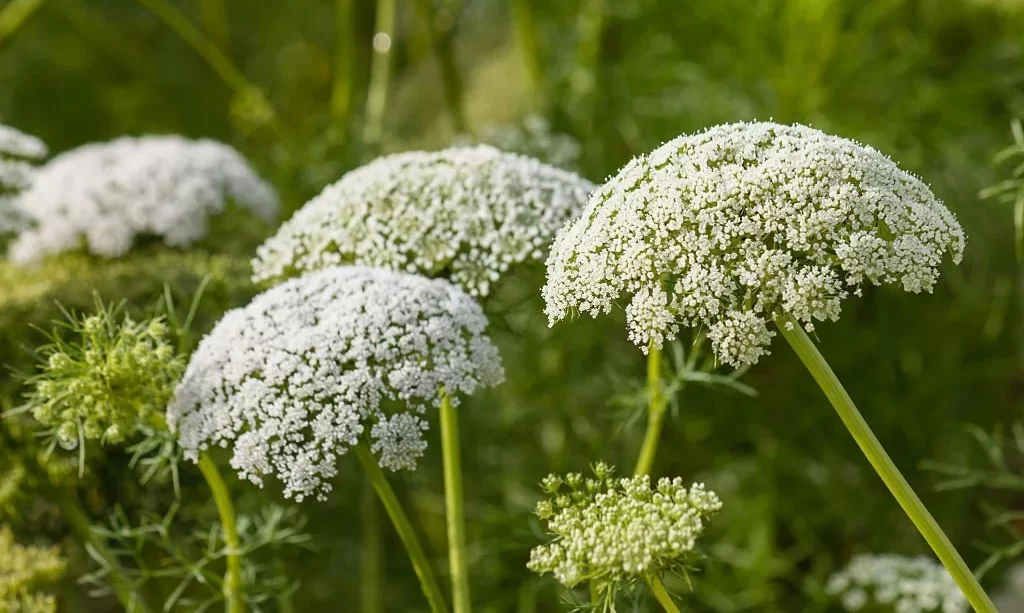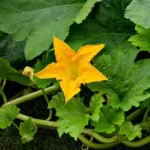Carrots, with their vibrant orange roots and versatility in the kitchen, are a beloved vegetable in gardens and kitchens around the world. While most people are familiar with the delicious edible part of the carrot, it’s equally fascinating to explore the process by which carrots reproduce. Beyond their delectable roots, carrots have a remarkable life cycle that includes the production of seeds, paving the way for future generations of these nutritious vegetables. In this article, we will delve into the intriguing world of carrot reproduction, from the stages of their life cycle to the intricacies of carrot flowering.
- Burpee exclusive. Our bountiful blend of wild colors! ‘atomic Red’, ‘bambino’, ‘Cosmic purple’, ‘lunar White’ and ‘Solar yellow’. smoothly tapered roots grow to 8″ x 2″ in loose soil
- Each packet contains 1500 seeds
- Sow outdoors in early spring after the average last frost date and harvest in 80 days
- Plant Height is 4″. plant spread is 3″. yields 8″ roots
- Annual for all growing zones from 1-11. Sunlight exposure = full-sun
Carrot Life Cycle
Understanding how carrots reproduce begins with a glimpse into their life cycle, which consists of several key stages:
- Germination: Carrot seeds, once planted, begin their journey with germination. Under the right conditions of moisture, temperature, and soil, a tiny seedling emerges from the seed.
- Vegetative Growth: In the early stages of the carrot’s life, it primarily focuses on developing its foliage and establishing a robust root system. During this phase, the edible carrot root begins to take shape underground.
- Flowering: Carrots transition to the reproductive phase in their second year of growth. This is when they start producing tall, slender stems adorned with clusters of small, delicate white flowers.
- Seed Production: The pinnacle of the carrot’s life cycle is the production of seeds. It is during this stage that the carrot plant’s reproductive journey takes center stage.
- Senescence: Following seed production, the carrot plant naturally begins to age and senesce, completing its life cycle.
Carrot Flowering
The flowering stage of carrots is a captivating part of their life cycle, where the transformation from a vegetative plant to a reproductive one occurs:
- Flower Appearance: Carrot flowers typically appear during the second year of growth, with tall, slender stems reaching upwards. These stems are crowned with umbrella-like clusters of small, white flowers.
- Reproductive Parts: Within each carrot flower, there are male and female reproductive structures. The male flowers produce pollen, while the female flowers contain ovaries that will eventually develop into seeds.
- Timing of Flowering: The timing of flowering can vary depending on environmental conditions and carrot varieties. Typically, flowering occurs during the plant’s second year, although some carrots may flower late in their first year.
- Pollination: Carrot flowers rely on pollinators, primarily bees, for the transfer of pollen from the male to the female parts. Successful pollination is a crucial step in seed production.
Carrot flowering marks the beginning of the reproductive phase, setting the stage for the development of seeds, which are essential for the perpetuation of this beloved vegetable. Understanding this phase of the carrot’s life cycle sheds light on the intricate journey that ensures a steady supply of carrot seeds for future plantings.
- ✔ Quality seeds packaged by MySeeds.Co All seeds sold by MySeeds.Co are Non-GMO based seed products and are intended for the current & the following growing season. “All seeds are produced from open pollinated plants, stored in a temperature controlled facility and constantly moved out due to popularity.
- ✔ Rainbow Carrot Mix – Over 3,500+ Seeds
- ✔ Enjoy a radiant blend of five carrot varieties
- ✔ Atomic Red, Bambino Orange, Cosmic Purple, Lunar White and Solar Yellow. Remove tops to prevent wilting when saving this variety for winter
- ✔ Simply place seeds in moist paper towels and inset into zip lock bag. Place bag in a dark warm place and allow 7-14 days for germination to occur
Pollination Process
The pollination process in carrots is a crucial step in their reproductive journey, as it determines the success of seed production:
- Transfer of Pollen: Carrot flowers are designed to attract pollinators, primarily bees. As bees visit the flowers in search of nectar and pollen, they inadvertently transfer pollen from the male flowers to the female flowers.
- Male and Female Flowers: Within each umbel of carrot flowers, there are both male and female flowers. Male flowers produce pollen, which contains the male reproductive cells, while female flowers house the ovaries, where seeds will develop if successfully pollinated.
- Cross-Pollination: While carrots are typically self-pollinating, meaning they can produce seeds from their own pollen, cross-pollination can occur if different carrot varieties are grown in close proximity. This can lead to hybrid seeds with characteristics of both parent plants.
- Bees as Pollinators: Bees play a vital role in carrot pollination by visiting flowers, collecting nectar, and inadvertently transferring pollen between flowers. Their efficient pollination efforts contribute to the formation of healthy carrot seeds.
Seed Development
Once successful pollination takes place, carrot flowers progress through stages of seed development:
- Fertilization: After pollen is transferred to the female flower’s stigma, it travels down to the ovules, where fertilization occurs. The male reproductive cells combine with the female reproductive cells to initiate seed development.
- Maturation: As fertilization takes place, the seeds begin to develop within the ovaries of the female flowers. Over time, the seeds undergo changes in size and color, transitioning from green to brown as they ripen.
- Seed Viability: It’s crucial to allow carrot seeds to fully mature before harvesting. Immature seeds may not be viable and may not germinate when planted. Patience is key in ensuring the seeds are ready for harvest.
- Seed Survival: Carrot seeds are encased in a protective seed coat, allowing them to remain viable for several years if stored correctly. Proper storage conditions help preserve the seeds for future plantings.
- 10 DELICIOUS CARROT SEED VARIETIES – Carefully curated different kinds of carrots. Plant one or plant all: Atomic Red, Chantenay Royal, Cosmic Purple, Imperator 58, Little Finger, Lunar White, Parisian, Scarlet Nantes, Solar Yellow, Tender Sweet
- 2500+ SEEDS IN REUSABLE MYLAR PACKAGING – Find clean, healthy carrot seeds in beautiful individual envelopes per variety. All of these in one, convenient, resealable mylar package with superior quality.
- NON-GMO, HEIRLOOM CARROTS SEEDS FOR PLANTING – Meticulously harvested & examined open pollinated planting seeds from trusted local suppliers expert in USDA zones. Guaranteed high quality and safe vegetable seeds for planting in the home garden.
- HIGH GERMINATION RATE OF 85%-90% – Can be easy to grow, these carrot plants can be successfully germinated even by beginner gardeners under optimal conditions. Harvest nourishing carrots in different colors per variety in no time!
- GET GUIDED WITH OUR GROW GUIDE – We are ready to help from sowing to harvesting. Get exclusive access to our digital grow guide where you can find tips and techniques on how to successfully plant your carrot seeds. Your gardening is our priority!
Harvesting Carrot Seeds
Harvesting carrot seeds is a meticulous process to ensure their quality for future plantings:
- Timing of Harvest: Carrot seeds should be harvested when they are fully mature. Signs of maturity include a brown coloration and dry, papery seed heads.
- Removing Seeds: To harvest carrot seeds, gently shake the dried flower heads or umbels over a clean surface to dislodge the seeds. Seeds can then be separated from the plant material.
- Drying and Cleaning: After harvest, allow the seeds to dry thoroughly to prevent mold or moisture-related damage. Clean the seeds by winnowing or using screens to remove any remaining debris.
- Storage: Properly store carrot seeds in a cool, dry place in airtight containers. Well-preserved carrot seeds can remain viable for several years, ensuring a consistent supply for future plantings.
By understanding the pollination process, seed development stages, and proper seed harvesting techniques, gardeners can actively participate in the carrot’s reproductive cycle and maintain a sustainable supply of carrot seeds for their gardens. This knowledge not only contributes to garden self-sufficiency but also helps preserve the diversity of carrot varieties.
Benefits of Saving Carrot Seeds
Saving carrot seeds offers several advantages for both gardeners and the broader cultivation community:
- Preserving Heirloom Varieties: One of the primary benefits of saving carrot seeds is the preservation of heirloom and unique carrot varieties. By doing so, gardeners contribute to the conservation of genetic diversity within the carrot species.
- Cost-Efficiency: Seed-saving allows gardeners to reduce their reliance on commercial seed suppliers, saving money in the long run. It transforms gardening into a more cost-effective and sustainable endeavor.
- Custom Varieties: Gardeners have the opportunity to develop custom carrot varieties tailored to their specific preferences and growing conditions through selective breeding. This empowers them to create carrots ideally suited to their needs.
- Self-Sufficiency: Seed-saving fosters self-sufficiency, enabling gardeners to maintain a steady supply of carrot seeds year after year without dependence on external sources.
Challenges in Carrot Seed Saving
While saving carrot seeds offers numerous benefits, it comes with specific challenges that gardeners should be aware of:
- Cross-Pollination Risk: Carrots have the potential for cross-pollination, especially when multiple varieties are grown near each other. This can lead to hybrid seeds with unpredictable characteristics.
- Isolation Requirements: To prevent cross-pollination, gardeners may need to isolate different carrot varieties from each other, which can be challenging for those with limited garden space.
- Biennial Growth: Carrots are biennial plants, meaning they flower and produce seeds in their second year of growth. This extended growth cycle requires patience from gardeners.
- Seed Quality Control: Ensuring the quality and viability of saved carrot seeds can be a complex process, requiring proper drying, cleaning, and storage techniques.
Conclusion
In conclusion, the journey of how carrots reproduce is a captivating one, encompassing flowering, pollination, seed development, and seed harvesting. Understanding this process empowers gardeners to actively participate in the carrot plant’s reproductive cycle, preserving heirloom varieties, reducing costs, and even creating custom carrot strains.
While saving carrot seeds brings substantial benefits, it also comes with challenges, such as the risk of cross-pollination and the need for careful isolation. However, these challenges can be overcome with knowledge, planning, and dedication to maintaining a sustainable supply of carrot seeds for future plantings.
By delving into the world of carrot reproduction, gardeners can not only enjoy the delicious rewards of their labor but also contribute to the preservation of diverse carrot varieties and the promotion of self-sufficiency in their gardening endeavors.






